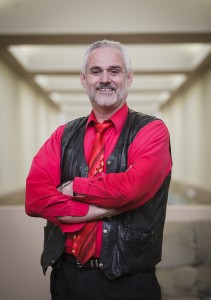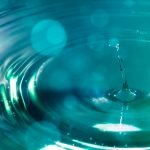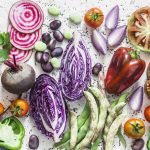Articular Neurology
How Osseous Manipulation Helps Joint Pain – A Neurological Explanation
Nick Buratovich, NMD
In the greater modality of physical medicine, osseous manipulation lies within the practice of manual medicine. Manual medicine, as osseous manipulation, is a touch treatment and has been utilized since antiquity. In all ancient cultures, some form of manual therapy has been used to treat painful conditions.1 When a person is injured, an instinctive reaction is to hold the injured and painful body part.
In the context of naturopathic modalities, manipulation is an intrinsic, endogenous modality, along with nutrition and mind-body medicine. This means, in my opinion, that these modalities are part of the person, vis a vis structure, attitude, and/or food intake. Juxtaposed, although still primary modalities, are homeopathic and botanical medicine; these modalities are exogenous in nature, yet still impact a person’s health and healing.
Indications for Manipulation
In the consideration of using osseous manipulation, there are primary and secondary indications. The primary indications are to restore joint motion and alignment. The secondary indications are to relieve pain, repair tissue texture abnormalities, and to treat reflex and psychosomatic conditions.2 The focus of this article is to explain how manipulation helps to manage joint pain.
Pain
Pain is an unpleasant sensory and emotional response to tissue injury. It is the most common reason for physician visits. As pain is a subjective experience, it may be graded on a Visual Analog Scale (0-10), also known as the Comparative Pain Scale; there is no objective measurement for pain. There are several types of pain, including nociceptive, neuropathic, reflex, and psychogenic.
- Nociceptive pain is a common type of joint pain. It is usually acute and is produced by mechanical (fixation/misalignment), thermal, or chemical means. It produces a sharp, dull, achy, throbbing type of pain, and responds well to osseous manipulation.
- Neuropathic pain is chronic and usually involves damage to the nerve fibers themselves, in proximity to joints, and is usually a result of compression or entrapment. It may also be caused by metabolic (diabetes mellitus) or neurological (multiple sclerosis) conditions. It produces a shooting, burning, tingling, numbing type of pain, and is difficult to treat.
- Reflex pain is a type of referred pain
- Psychogenic pain is usually a result of somatization, yet may still be relieved by expressive osseous manipulation
Mechanoreceptor Innervation
When we look at articular neurology, the functional innervation of the joints is facilitated by mechanoreceptors and allows the body to perceive where it is in space. This is known as proprioception. There are 4 types of mechanoreceptors: Types 1, 2 and 3 are encapsulated and found in joints and peri-articular tissues. Type 4 is a free nerve-ending, which is not encapsulated, and is known as a nociceptor.3 The nociceptors do not adapt, meaning that they keep firing; as a result, muscle tension is triggered, which then restricts joint motion. Nociceptors also reflexively activate the sympathetic nervous system. This leads to a hyperexcitable central state that can present as pain, sweating, pallor, nausea, vomiting, abdominal pain, sinus congestion, dyspnea, palpitations, and/or chest pain. When mechanoreceptors are stimulated through motion, nociceptive signals are inhibited.4 The types of motion that can stimulate the mechanoreceptors can be active or passive range of motion, exercise, bodywork, and osseous manipulation.
As the purpose of this article is to show how osseous manipulation can help to manage joint pain, I will use that as my example of how this is accomplished. Restricted joint motion (fixation /decreased joint play) causes an increased firing in nociceptive axons; therefore, a decrease in joint motion may cause an increase in the perception of pain. Osseous manipulation or controlled motion stimulates the joint and peri-articular mechanoreceptor relay system, which results in presynaptic inhibition of the nociceptive afferent pain fibers at the level of the spinal cord. This serves to inhibit pain transmission and also the hyperexcitable central state, leading to a state of relaxation or feeling of well-being.
In conjunction with the somatic benefits of manipulation, increased joint play, realignment, and pain relief, about 1 in 4 patients gets positive non-musculoskeletal benefits after manipulation, due to the inhibition of the sympathetic nervous system. These benefits could include easier breathing, improved digestive function, reduced abdominal pain, clearer or sharper vision, improved hearing, and improved circulation. This is an example of enhancing the self-regulatory systems of the body, ie, stimulating the vis medicatrix naturae.
Neurological Pathways of Pain
One of the theories used to explain pain management through the pain pathways of the nervous system is the Gate Control Theory.5 This theory, postulated by Melzack and Wall in the 1960s, describes how activities (controlled motion – manipulation) that increase the activity of the large-diameter mechanoreceptor fibers tend to decrease pain by “closing the gate.” Circumstances (joint fixation) that increase the activity of the small-diameter nociceptive fibers increase pain by “opening the gate.”
This mechanism of pain modulation involves the gating of incoming nociceptive signals at the level of the spinal cord, via the activity of joint mechanoreceptors, types 1, 2 and 3. Nociceptive afferent pain fibers enter the spinal cord through the dorsal nerve roots, where they synapse with a second-order neuron in the posterior grey horn (sustantia gelatinosa). The axons of the second-order neurons then cross to the opposite side of the cord where they become a component of the spinothalamic tract. The axon of the second-order neuron then passes upward to the thalamus with a third-order neuron, which sends fibers to the somesthetic area of the cerebral cortex and is analyzed for the source, severity, and quality of pain.
Peripheral Modulation of Pain
As types 1,2, and 3 mechanoreceptors enter the spinal cord through the dorsal nerve root, they not only communicate with interneurons that will eventually make connections to the brain, they also give off collateral branches that pass into the posterior grey horn. There, they terminate on the presynaptic terminals of the second-order nociceptive neurons upon which they exert an inhibitory effect. This inhibitory effect is thought to prevent the transmission of nociceptive signals (pain) to the higher pain centers.3,6
As mentioned, increased firing in nociceptive axons from decreased joint motion (ie, fixation) can result in increased pain perception. Activity in the mechanoreceptor relay system (types 1, 2, and 3) is initiated by controlled motion – mobilization and manipulation, which results in presynaptic inhibition of the nociceptive afferent pain fibers at the level of the spinal cord. This is how manipulation helps to manage joint pain.
In addition to the pre-described indications for physical medicine and manipulation for musculoskeletal and neurological conditions – which include pain, inflammation, postural distortions/imbalance, articular fixation, and positional dis-relationship – there are additional indications for the use of physical medicine and manipulation within naturopathic medicine, including constitutional, metabolic, and/or psychological conditions requiring…
- immune enhancement or regulation
- relief of circulatory or lymphatic stasis
- enhanced respiratory function
- enhanced digestive, eliminative, and other metabolic function
- restoration of sleep and/or elimination of fatigue and/or cognitive problems
- normalization of urologic or gynecological function
- serving as potential catalyst for processes such as increasing body awareness, highlighting body boundaries and body space, and integrating the body-self
- bioenergetic balance
Also integral to the physical medicine and manipulative process is the development of the therapeutic relationship between practitioner and patient. This catalytic relationship supports self-efficacy and self-agency in patients, empowering them to be involved in purposeful processes, culminating in a healing response of self-regulation and balance, and a return to health.
 Nick Buratovich, NMD, is a professor of naturopathic medicine and the department chair of Physical Medicine at the Southwest College of Naturopathic Medicine (SCNM) and Health Sciences. He graduated from the National College of Naturopathic Medicine in 1983. He is an original faculty member at SCNM and also has served as secretary of the Board of Trustees. He maintains a clinical rotation at the Southwest Naturopathic Medical Center, as well as a private practice in naturopathic family medicine with an emphasis in musculoskeletal disorders and pain management.
Nick Buratovich, NMD, is a professor of naturopathic medicine and the department chair of Physical Medicine at the Southwest College of Naturopathic Medicine (SCNM) and Health Sciences. He graduated from the National College of Naturopathic Medicine in 1983. He is an original faculty member at SCNM and also has served as secretary of the Board of Trustees. He maintains a clinical rotation at the Southwest Naturopathic Medical Center, as well as a private practice in naturopathic family medicine with an emphasis in musculoskeletal disorders and pain management.
References
- Greenman P. Principles of Manual Medicine. Philadelphia, PA: Lippincott Williams & Wilkins; 2003:
- Chaitow L. Naturopathic Physical Medicine. Edinburgh, England: Churchill Livingstone Elsevier; 2008.
- Dvorak J. Dvorak V. Manual Medicine. New York, NY: Thieme Medical Publishers, Inc; 1990.
- Wyke B, Polacek P. Articular neurology – the present position. J Bone Joint Surg Br. 1975;57-B:401.
- Modern Ideas: The Gate Control Theory of Chronic Pain. http://www.spine-health.com/conditions/chronic-pain/modern-ideas-gate-control-theory-chronic-pain. Accessed March 12, 2014.
- Wyke BD. Articular Neurology and Manipulative Therapy. In: Idezak RM, ed. Aspects of Manipulative Therapy. Victoria, Australia: Carlton Lincoln Institute of Health Science; 1980.








